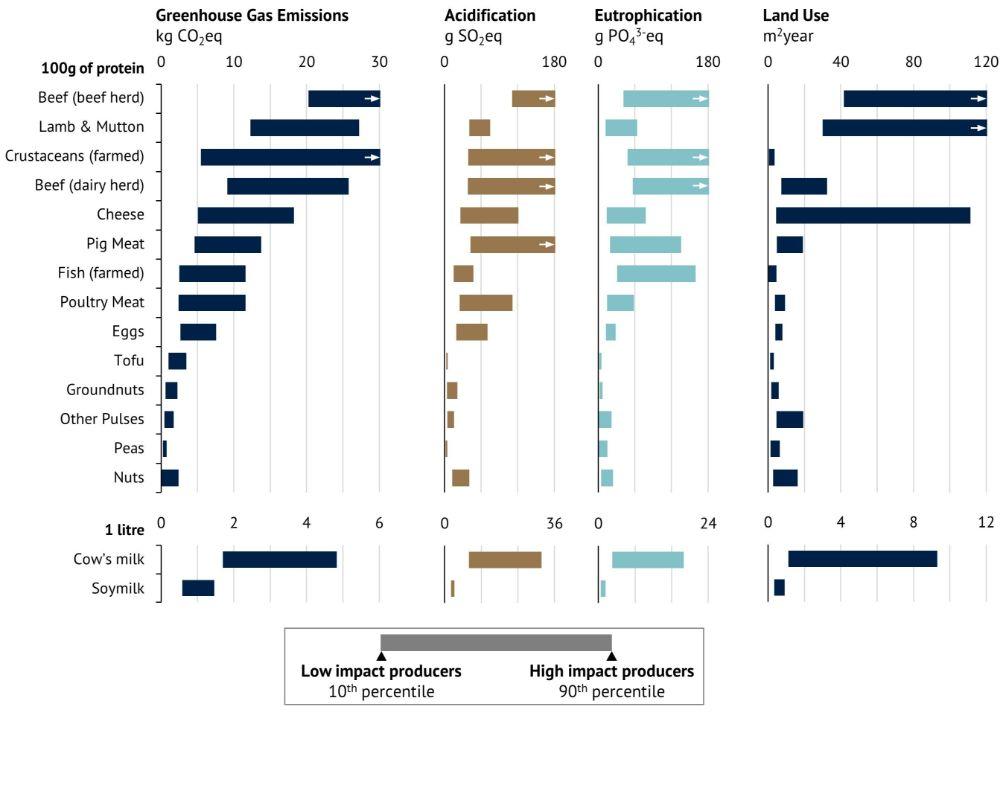Revolutionizing Butter Production: Harnessing Greenhouse Gases for a Sustainable Future
In an unprecedented development that could transform the landscape of food manufacturing, scientists are investigating an unexpected source for butter: greenhouse gases. As the urgency of the climate crisis escalates and the detrimental effects of livestock farming become increasingly apparent, researchers are innovating ways to produce dairy products without relying on traditional dairy cows. An article from Mother Jones delves into this green technology, illustrating how capturing carbon emissions can not only lessen our dependence on resource-heavy animal agriculture but also offer a sustainable substitute for cherished items like butter. This emerging trend prompts critical discussions about food’s future, sustainability practices, and strategies to alleviate climate change while still enjoying our favorite flavors.
Cutting-Edge Methods for Eco-Friendly Butter Production
Pioneering research is underway to explore the viability of producing butter through advanced technologies that utilize greenhouse gases instead of conventional dairy farming techniques. This innovative process captures carbon dioxide and other emissions from industrial activities and transforms them into lipids suitable for creating a butter-like product. The ramifications extend beyond culinary enjoyment; this method offers a potential pathway to significantly reduce the environmental impact associated with traditional dairy production by curtailing methane emissions linked to livestock farming.
This forward-thinking initiative underscores a transition towards sustainable food production methods, reflecting an increasing consumer demand for eco-friendly options. Researchers are concentrating on several pivotal areas to refine this groundbreaking concept:
- Microbial Fermentation: Employing specially designed microbes that convert carbon emissions into fatty acids.
- Cellular Agriculture: Utilizing plant-based materials to cultivate fats that replicate both texture and flavor found in standard butter.
- Resource Efficiency: Ensuring minimal water and land usage compared to traditional dairy operations.
The evolution of this research field necessitates collaboration among scientists, food technologists, and environmental advocates. A recent study has shown that these innovative methods can yield butter with not only familiar creamy characteristics but also a significantly reduced carbon footprint when juxtaposed with its conventional counterpart. The table below provides a concise comparison between traditional butter and its sustainable alternative:
| Description | Traditional Butter | Sustainable Butter Alternative |
|---|---|---|
| Carbon Emissions | Elevated | Diminished |
| Lands Utilized | Elevated (land & water) | |
| Diminished |
Environmental Benefits of Dairy Substitutes
The momentum behind dairy alternatives is surging not just in supermarkets but also within scientific laboratories where researchers are devising novel approaches aimed at minimizing the ecological footprint associated with butter production. Conventional dairy farming contributes substantially to greenhouse gas emissions—especially methane released during cow digestion processes. By leveraging advanced technologies alongside repurposing greenhouse gases, scientists are crafting edible products from these emissions as an intriguing solution addressing the environmental challenges posed by conventional dairies. Some notable advantages include:
- Mitigated Methane Emissions : Converting greenhouse gases into consumable goods aids in combating climate change .< / li >
- Reduced Land Requirements : Dairy substitutes necessitate considerably less land compared with standard dairy farms .< / li >
- Improved Sustainability : Production methodologies can be optimized , minimizing waste generation along with energy consumption .< / li >
< / ul >The ecological benefits offered by these alternatives extend beyond mere emission reductions . A comparative analysis reveals significant differences in resource efficiency between traditional dairies versus innovative substitutes derived from greenhouse gas utilization . The following table highlights key distinctions regarding their environmental impacts : p >
Metric th > Conventional Dairy th > Dairy Alternatives Using GHGs th > tr > < td >Land Use (hectares per kg) < A growing number of environmentally conscious consumers fuels demand for sustainable options , propelling innovation within food industries worldwide.The prospectof transforminggreenhousegasesintobutternotonlypromisesdeliciousflavorsbutcouldalsoleadtoasignificantdecreaseinourenvironmentalimpact,pavingthewayforagreenereconomy.Suchadvancementsinfoodsciencehighlightthetransformativepotentialoftechnologyinaddressingclimatechangewhilefulfillingglobalfoodrequirements.< / p >
Embracing Green Technologies: The Future Landscape of Food Production
The global community faces pressing demands for sustainable agricultural systems as visionary scientists develop technologies enabling usto createdairyproductswithoutrelyingontraditionallivestock.Byutilizing
Emerging companies leadthismovementbyleveragingbiotechnologytoconceiveediblefatsandproteinsfromCO₂&otherGHGsemissionsmimickingtaste&texturefoundinconventionaldairy.Keyfeaturesoftheseinnovationsinclude:
- Lower Carbon Footprint: Utilizationofwastegassesresultsinsignificantlyloweremissionlevels.
- Resource Efficiency: Reducedwater&landusagecomparedtotraditionalfarmingmethods.
- Animal Welfare: Productionwithoutethicalissuesarisingfromlivestockraising.
To illustratepotentialbenefitsoftheseapproachesconsiderfollowingcomparisonbetweentraditionalversusinnovativeproductionmethods:
<"TraditionalDairy"<"/type"><"CarbonEmissions(kgCO₂perkgproduct)"<"/carbon-emissionstotal"><"WaterUsage(litersperkgproduct)"<"/waterusage">” ”
”
TraditionalDairy”
3.”
1000″
”GreenTechnologyDairyReplacement”
0.”
50″“
”
“”
Conclusion: A New Era in Food Production Awaits Us!
The transition awayfromtraditionaldairyingtowardscreatingbutterusinggreenhousegasesisanimportantmilestoneinthejourneyforfindingviablesustainablefoodalternatives.Asresearcherscontinueexploringnewpossibilitiesinfoodtechnologytheyarenotjusttacklingtheecologicalchallengesposedbylivestockagriculture,butalsopavingtheroadtowardmoreeco-consciousfuture.Byleveragingcarbonemissionpotential,thistrailblazingmethodologycouldreshapeourrelationshipwithfoodproductionwhilehelpingmitigateclimatechange.Asinterestinalternativeproteinsrisesalongsideconsumerdemandsforsustainability,theimplicationsstemmingfromthisresearchmayechofarbeyondjusttheculinaryrealm,sparkingatransformationalshiftinthinkingaboutintersectionsamongfoodtechnologyandenvironmentalresponsibility.
